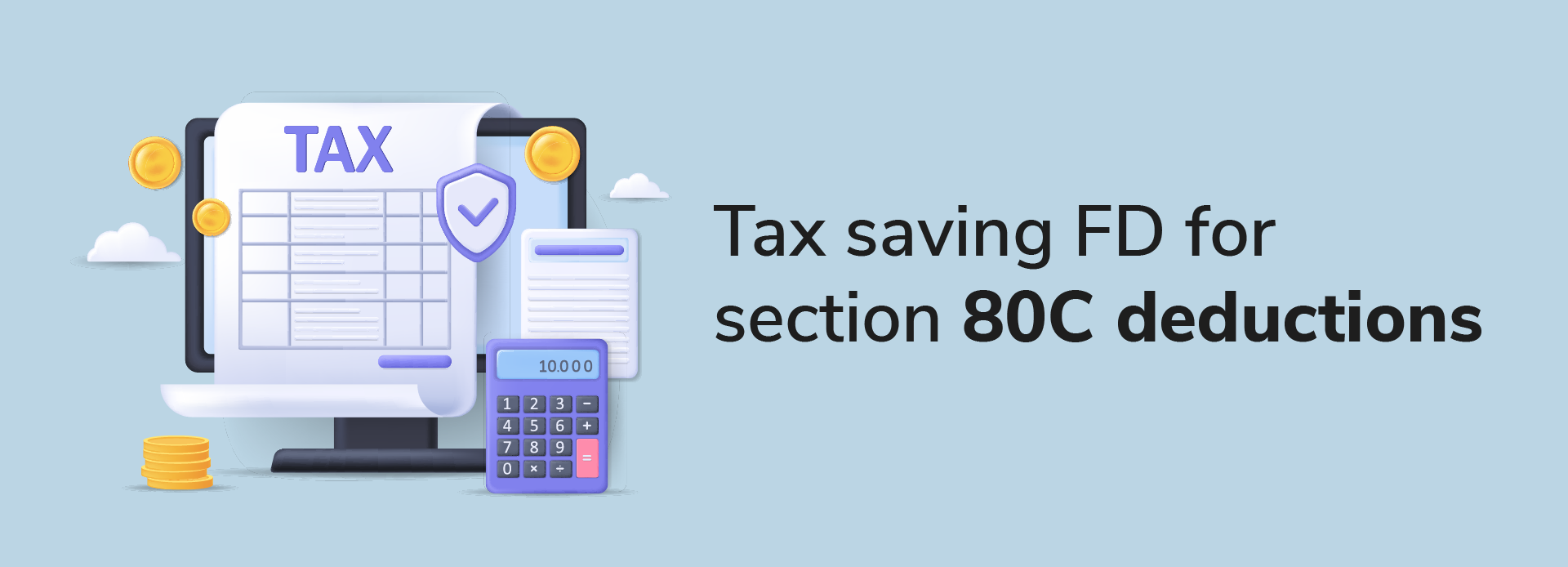
Tax saving FD for section 80C deductions: Benefits, interest rates, risks, and limits
10 January 2024 | By INDIE
Fixed deposits (FDs) are a popular investment option, owing to their safety and stable returns. Tax-saving fixed deposits, often known as tax-saver FDs, are notable for their distinct advantages. These FDs allow you to save on income tax under section 80C of the Income Tax Act, 1961 while offering competitive interest rates. INDIE, for example, offers up to 7.50% per year on these fixed deposits. Here's a deeper look at the advantages, drawbacks, and limits of FDs.
Fixed deposit tax benefits
Tax benefits
The possibility to lower your taxable income is one of the most appealing advantages of tax-saving fixed deposits. You can claim a deduction under section 80C if you invest in these FDs. This implies that the amount you invest can be deducted from your total taxable income, up to a ceiling of ₹1.5 lakh every financial year, lowering your tax liability. It is a clever approach to reduce your tax burden while saving money.
Fixed returns
Unlike stock market investments, tax-saver FDs provide set returns. This means you will know exactly how much money you will have after the investing duration ends. These FDs provide a sense of security and predictability because your returns are not susceptible to market swings. Because of their guaranteed returns, they are an excellent alternative for cautious investors or those who wish to avoid the risks associated with equities or mutual fund investments.
Higher interest rates
In comparison to regular savings bank accounts, which generally provide lower interest rates, tax-saving FDs provide greater interest rates. Consider INDIE, which provides a profitable annual interest rate of up to 7.50%. This higher interest rate means your money isn't simply sitting there doing nothing; it is actively growing, frequently outperforming the growth rate of a conventional savings account. This makes tax-saving FDs an appealing alternative for people wishing to maximise their savings.
Lock-in period
The fixed deposit tax-saving option comes with a five-year lock-in term. While this may appear to be a constraint at first, it serves a vital role in encouraging conservative financial planning. By committing to a long-term savings plan, you are committing to a long-term savings strategy, which may be advantageous for accomplishing greater financial goals. This time frame also assures that you remain invested, which is essential for receiving the full advantages of compound interest.
Risks involved in FDs
Tax on FD interest
Tax on interest on fixed deposits is levied as per your income slab. Staggering maturity dates can help distribute tax liability.
Lock-in period
The five-year lock-in can be restrictive, so invest funds you will not need immediately. Make sure you have an emergency fund parked in a highly liquid avenue such as a savings account or a regular fixed deposit before you invest in a tax-saving FD.
Fixed returns
The guaranteed returns might be lower than potential equity market gains. Diversifying your investment portfolio can help.
Limits on tax-saving fixed deposits
The maximum tax deduction on fixed deposits that may be claimed under section 80C is presently set at ₹1.5 lakh each financial year. As a result, the maximum amount that may be invested in tax-saving FDs to qualify for this deduction is ₹1.5 lakh. It’s also important to note that this tax benefit is only available if an individual is following the old tax regime. For those following the new tax regime with lower income slab tax rates, the section 80C benefit is not available.
Ending note
Tax-saving FDs are an appealing option, offering tax savings and high interest rates. Also, they are an essential part of a diversified investment portfolio, ensuring security and financial discipline, despite the lock-in period and tax on FD interest.





